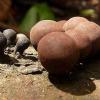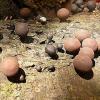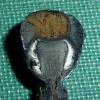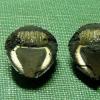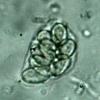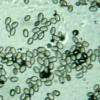
20-12-2025 23:08
Patrice TANCHAUDBonsoir, récolte sur sol sablonneux dans l'arri�

21-12-2025 09:32
Hello.A tiny ascomycete found embedded in wood in

20-12-2025 15:47
Mirek GrycHi.These grew on pine wood that was heavily covere

18-12-2025 21:17
Pol DebaenstThe identification took me to Byssonectria deformi

15-12-2025 07:09
 Danny Newman
Danny Newman
indet. Rutstroemiaceae sp. on unk. fallen leavesMc

19-12-2025 10:10
Patrice TANCHAUDBonjour, récolte réalisée en milieu dunaire, a

18-12-2025 17:23
 Bruno Coué
Bruno Coué
Bonjour,je serais heureux d'avoir votre avis sur c
A Phylacia from Panama
Esquivel-Rios Eduardo,
03-09-2012 04:20
Did someone knows about Phylacia genera (Xylariales), a gasteroid ascomycete, this is posible a new specie from Panama.
Peter Welt,
03-09-2012 10:43

Re : A Phylacia from Panama
Have no idea of this genus, but a key is available here:
http://www.cybertruffle.org.uk/cyberliber/index.htm
Medel, R.; Rogers, J.D.; Guzman, G. (2006) - Phylacia mexicana sp.nov. and consideration of other species with emphasis on Mexico. Mycotaxon 97: 279-290.
Peter
http://www.cybertruffle.org.uk/cyberliber/index.htm
Medel, R.; Rogers, J.D.; Guzman, G. (2006) - Phylacia mexicana sp.nov. and consideration of other species with emphasis on Mexico. Mycotaxon 97: 279-290.
Peter
Jacques Fournier,
03-09-2012 15:04

Re : A Phylacia from Panama
Hi Eduardo,
nice find and nice photos, very informative. Externally the best match seems to be P. globosa, already known from Panama, but it would help to have also the spores dimensions. Better to record them on spores accumulating at the top of the stroma just beneath the crust because they are mature and pale brown, unlike the ones you recorded. The paper by Medel et al. is useful but unfortunately they did not record and use in their key the pigments released by the stroma in 10% KOH. They vary from shades of olivaceous to purplish and they are highly diagnostic. Just pick up a small chip of the external crust of mature stroma and put in in a drop of KOH, you should get a nice reaction within a minute.
Cheers,
Jacques
nice find and nice photos, very informative. Externally the best match seems to be P. globosa, already known from Panama, but it would help to have also the spores dimensions. Better to record them on spores accumulating at the top of the stroma just beneath the crust because they are mature and pale brown, unlike the ones you recorded. The paper by Medel et al. is useful but unfortunately they did not record and use in their key the pigments released by the stroma in 10% KOH. They vary from shades of olivaceous to purplish and they are highly diagnostic. Just pick up a small chip of the external crust of mature stroma and put in in a drop of KOH, you should get a nice reaction within a minute.
Cheers,
Jacques

